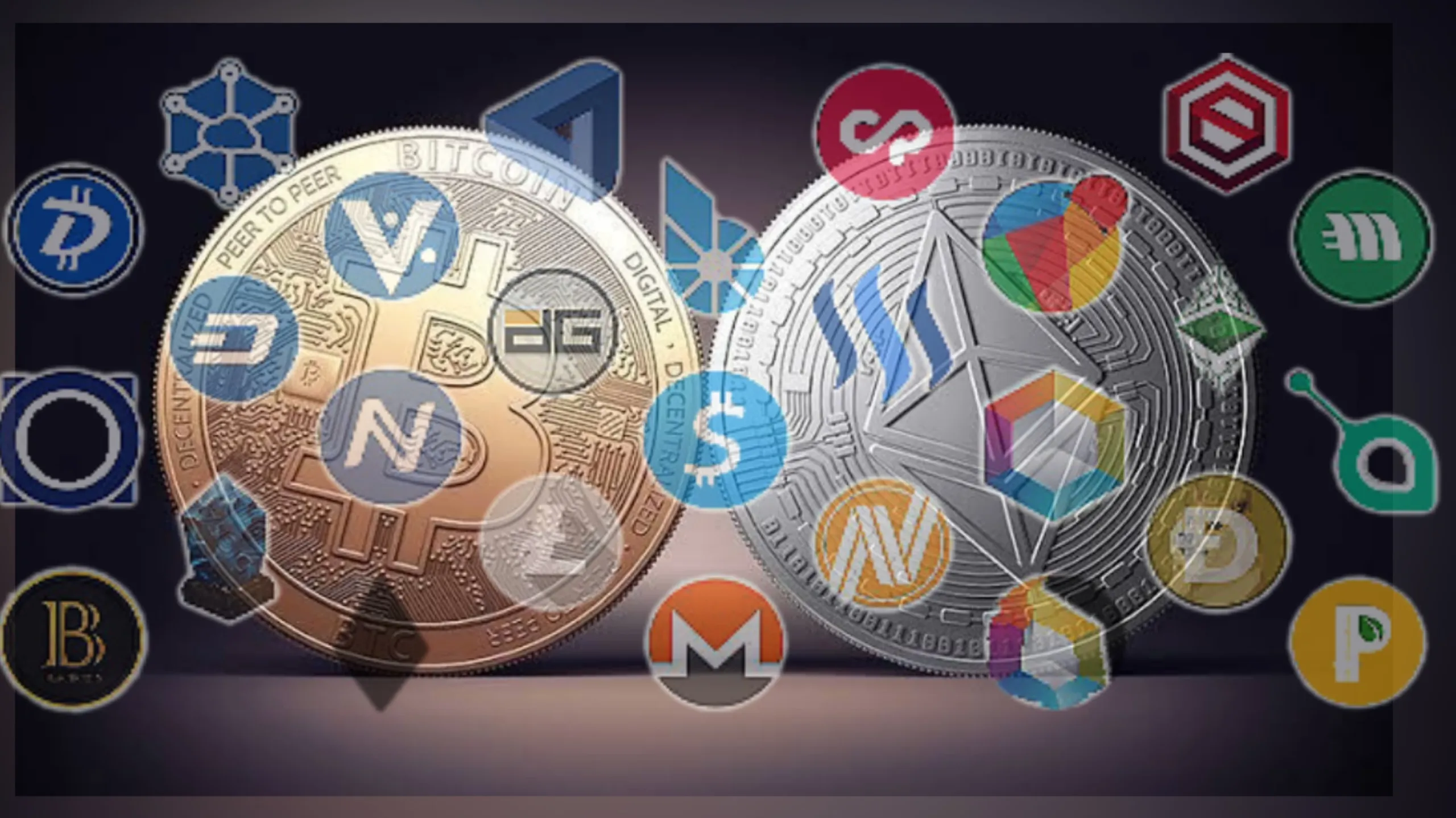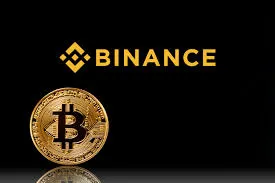
Cryptocurrencies have taken the world by storm ever since the introduction of Bitcoin in 2009. With the rise in popularity and value of Bitcoin, many other altcoins (alternative coins) have emerged as potential investment options for traders and enthusiasts alike. While Bitcoin serves as a digital currency and store of value, altcoins offer a variety of different use cases and features. In this guide, we will explore the top altcoins that you should know about in order to make informed decisions while investing or trading in the cryptocurrency market.
1. Introduction to Altcoins

Before diving into the specific altcoins, it is important to understand what they are and how they differ from Bitcoin. Altcoins refer to all cryptocurrencies that are not Bitcoin. While Bitcoin was the first decentralized digital currency, altcoins have been created with their own unique features and purposes. Some altcoins try to improve upon the technology of Bitcoin, while others have completely different use cases such as smart contracts or privacy features. As of August 2021, there are over 11,000 altcoins in existence, making the cryptocurrency market a highly diverse and constantly evolving landscape.
What Makes Altcoins Different From Bitcoin?
While most altcoins share some similarities with Bitcoin, there are a few key differences between the two. Firstly, the underlying technology of altcoins can vary greatly, whereas Bitcoin is based on the blockchain technology. Some altcoins use different consensus mechanisms such as proof-of-stake instead of Bitcoin’s proof-of-work. Additionally, altcoins may have different features and use cases that set them apart from Bitcoin.
Factors to Consider When Investing in Altcoins
Investing in altcoins can be a lucrative opportunity, but it also comes with its own risks. Therefore, it is important to consider certain factors before investing in any altcoin. These include:
- Market Cap: The market capitalization of an altcoin is the total value of all its circulating supply. This can give you an idea of the popularity and demand for the coin.
- Team and Development: Researching the team behind the project and their experience can provide insights into the potential success of the altcoin. Additionally, keeping an eye on the development updates and progress can help determine the future prospects of the altcoin.
- Use Case and Technology: Understanding the use case and the technology behind an altcoin can give you a better understanding of its potential growth and adoption in the market.
- Community Support: The community surrounding an altcoin can greatly influence its popularity and value. It is important to research the community engagement and support for the altcoin before investing.
- Risks and Security: As with any investment opportunity, there are risks involved when investing in altcoins. It is important to thoroughly research the project’s security measures and potential vulnerabilities before making any investments.
Now that we have covered the basics of altcoins and what to consider before investing, let’s dive into the top altcoins of 2021.
2. Ethereum (ETH)
Ethereum is the second-largest cryptocurrency by market capitalization, currently sitting at over $400 billion as of August 2021. Launched in 2015 by Vitalik Buterin, Ethereum is a decentralized platform that enables developers to build and deploy decentralized applications (dApps) using smart contracts. These smart contracts are self-executing code that automatically enforces the terms of an agreement between two parties, eliminating the need for intermediaries.
Key Features of Ethereum
- Smart Contracts: Smart contracts are the backbone of Ethereum’s functionality. They allow for the creation of decentralized applications, making it a popular choice for developers.
- Ethereum Virtual Machine (EVM): The EVM is a virtual machine that runs on the Ethereum network and is responsible for executing smart contracts. It allows for the development of decentralized applications in various programming languages, making it more accessible for developers.
- Decentralized Finance (DeFi): Ethereum’s smart contracts have paved the way for the emergence of decentralized finance (DeFi) applications, which aim to provide financial services without relying on traditional intermediaries.
- Upcoming Upgrades: Ethereum is constantly evolving, with plans for upgrades such as Ethereum 2.0, which will introduce a new consensus mechanism and potentially improve scalability.
Risks and Future Outlook for Ethereum
As the second-largest cryptocurrency, Ethereum has a strong community and solid foundation. However, there are risks associated with investing in Ethereum, such as scalability issues and competition from other smart contract platforms. Additionally, the upcoming upgrades may bring about changes and uncertainties in the future. Nevertheless, Ethereum remains a top player in the crypto market and a key altcoin to watch out for.
3. Binance Coin (BNB)

Binance Coin (BNB) is the native token of the Binance exchange, one of the largest cryptocurrency exchanges in the world. Launched in 2017, Binance Coin operates on the Binance Chain and serves as the fuel for the Binance ecosystem. Initially created as an ERC-20 token on the Ethereum blockchain, Binance Coin migrated to its own blockchain in 2019.
Key Features of Binance Coin
- Utility Token: Binance Coin is primarily used to pay for trading fees on the Binance exchange. Holding BNB also provides discounts on trading fees.
- Token Burns: Every quarter, Binance uses 20% of its profits to buy back and burn BNB tokens, reducing the circulating supply and boosting its value.
- Expansion into Other Services: Binance has expanded its services beyond just an exchange, providing options for staking, lending, and more. This has increased the utility and demand for Binance Coin.
- Potential for Mass Adoption: With Binance’s growing user base and expansion into various services, there is potential for Binance Coin to become a widely used cryptocurrency in the future.
Risks and Future Outlook for Binance Coin
As with any cryptocurrency, there are risks involved in investing in Binance Coin. One major risk is its reliance on the success of the Binance exchange. Additionally, regulatory issues or competition from other exchanges could also impact its value. However, with Binance’s strong track record and expansion plans, Binance Coin remains a prominent altcoin with potential for growth and adoption.
4. Cardano (ADA)
Cardano is a third-generation blockchain platform that aims to solve some of the scalability and interoperability issues faced by earlier blockchains. Launched in 2017 by Charles Hoskinson, one of the co-founders of Ethereum, Cardano is often referred to as the “Ethereum killer” due to its potential to compete with Ethereum’s smart contract capabilities.
Key Features of Cardano
- Proof-of-Stake Consensus Mechanism: Cardano uses a proof-of-stake (PoS) consensus mechanism, which is considered to be more energy-efficient and secure compared to Bitcoin’s proof-of-work (PoW) mechanism.
- Layered Architecture: Cardano’s blockchain is divided into two layers – the settlement layer and the computation layer. This allows for better scalability and interoperability.
- Upcoming Upgrades: Similar to Ethereum, Cardano has plans for upcoming upgrades, such as the Goguen update, which will introduce smart contracts to the network.
- Partnerships and Real-World Use Cases: Cardano has formed partnerships with various governments and organizations, such as the African nation of Ethiopia, for real-world use cases of its technology.
Risks and Future Outlook for Cardano
While Cardano has a strong team and potential for growth, there are still risks involved in investing in the altcoin. The project is still in its early stages, with many of its planned upgrades yet to be implemented. Additionally, competition from other smart contract platforms and regulatory issues could impact its future prospects. However, with a focus on scalability and real-world adoption, Cardano remains a top altcoin to look out for in the future.
5. Dogecoin (DOGE)
Dogecoin was created as a joke in 2013, inspired by the popular “Doge” meme. However, the altcoin gained traction in 2021, thanks to endorsements from high-profile figures such as Elon Musk and Mark Cuban. Dogecoin operates on its own blockchain and has a circulating supply of over 130 billion coins.
Key Features of Dogecoin
- Meme Culture: Dogecoin’s popularity can be attributed to its meme status and the community behind it, which has been able to drive up its value.
- Inflationary Supply: Unlike Bitcoin and many other cryptocurrencies with a limited supply, Dogecoin’s supply is not capped. This means that an infinite number of DOGE can be mined and introduced into circulation, potentially impacting its value.
- Low Transaction Fees: Due to its low transaction fees, Dogecoin has been embraced by some merchants as a form of payment, giving it some utility and real-world use cases.
- Volatile Nature: Dogecoin’s value is highly volatile, often influenced by social media hype and market trends.
Risks and Future Outlook for Dogecoin
Given its meme nature and lack of a clear use case, Dogecoin’s future is uncertain. It is primarily driven by speculation and hype, making it a risky investment option. Additionally, the altcoin does not have a dedicated development team, which could impact its future growth and updates. However, with a strong community and support from high-profile individuals, Dogecoin’s price and popularity may continue to fluctuate in the future.
6. Polkadot (DOT)

Polkadot is a multi-chain platform that aims to bridge different blockchains and enable them to work together seamlessly. Founded by Gavin Wood, co-founder of Ethereum, Polkadot launched its mainnet in 2020 and has quickly gained traction in the market.
Key Features of Polkadot
- Cross-Chain Compatibility: Polkadot’s interoperability allows for seamless communication between different blockchains, making it easier for developers to build decentralized applications.
- Scalability and Governance: Polkadot’s sharding technology allows for better scalability and processing of transactions. Additionally, the platform uses a unique governance system where stakeholders can vote on proposed changes or upgrades.
- Parachains and Parathreads: Parachains are standalone blockchains that run parallel to the main Polkadot network, while parathreads offer a more cost-effective option for hosting smart contracts.
- Upcoming Upgrades and Partnerships: Similar to other altcoins on this list, Polkadot has planned upgrades in the pipeline, such as the launch of parachains. The platform has also formed partnerships with various organizations for real-world use cases.
Risks and Future Outlook for Polkadot
As with any young project, there are risks associated with investing in Polkadot. Its success largely depends on the adoption and use of its technology, which is still in its early stages. Additionally, competition from other interoperable blockchains and regulatory issues could impact its future prospects. Nevertheless, Polkadot remains a top altcoin with potential to drive innovation and advancements in the cryptocurrency space.
Conclusion
The cryptocurrency market is a highly volatile and constantly evolving landscape. As with any investment, it is important to thoroughly research and understand the altcoins you are interested in before making any decisions. This guide covers some of the top altcoins in the market, but there are many others worth exploring. Additionally, it is important to keep an eye on market trends and updates from the projects themselves to stay informed about the latest developments.
In conclusion, altcoins offer a diverse range of features and use cases, providing opportunities for both traders and investors. Whether you are looking for a store of value, a potential long-term investment, or a promising project to support, the world of altcoins has much to offer.
Để lại một phản hồi